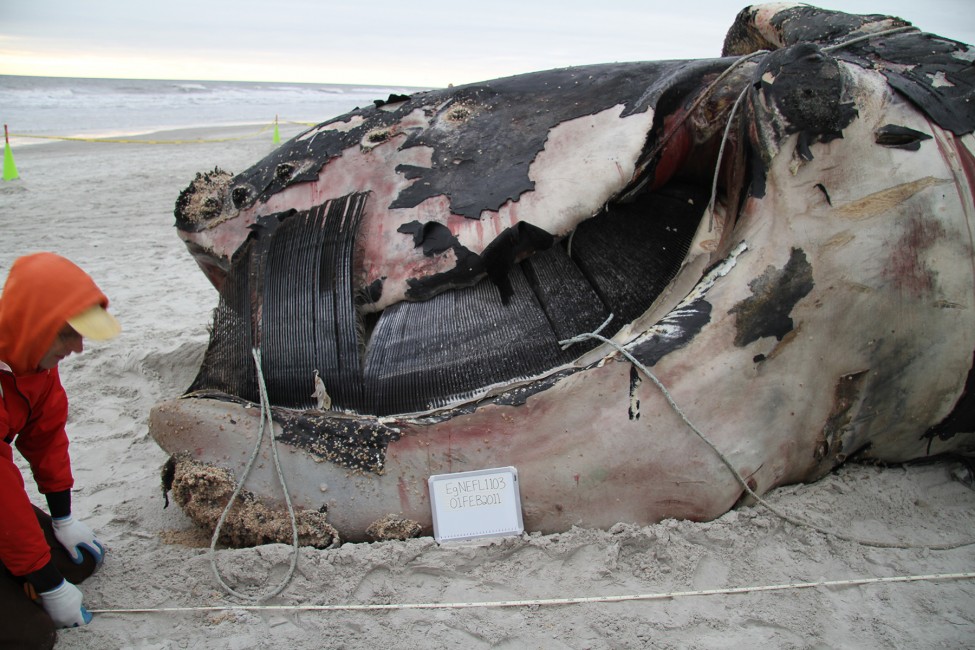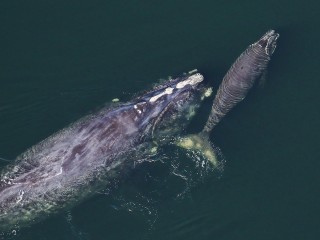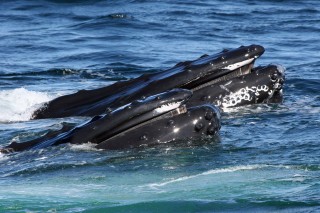
April 24, 2018
The Rarity of North Atlantic Right Whales, Part 2
- as seen by -
 Julie Larsen
Julie Larsen
North Atlantic right whales are endangered large baleen whales that live off the coasts of the United States and Canada.
Clay George, a wildlife biologist for the Georgia Department of Natural Resources, is part of a scientific team that works to conserve these whales and other marine mammals and address problems that affect them like entanglement in fishery gear.
Entanglements are the biggest issue facing North Atlantic right whales survival. Over 80 percent of right whales have become tangled in fishing rope during their life and nearly 60 percent have been entangled twice.
“Last year, an unprecedented 17 right whales were found dead along the coast of Canada and New England,” says George. “All of the carcasses that were properly examined showed evidence of blunt trauma from presumed ship collisions or evidence of chronic rope entanglement. The right whale population could go extinct in a few decades if mortalities continue at such a high rate.”
Research shows that the reproductive output of female right whales is reduced significantly if they survive serious entanglements. Some estimates place the number of lobster pots in coastal Maine waters alone at around three million pots. These and other pots in the water throughout the Northeast United States and Canada are connected to synthetic rope — most of it with 3000-10,000 pound breaking strength. Not surprisingly, most of the rope and fishing gear removed from entangled right whales can be traced to trap and pot gear — the type that is used to catch lobster, snow crab, and other shellfish. George has removed gear like this from live and dead right whales on many occasions. He has observed firsthand what it does to these marine mammals.
“It’s heartbreaking,” continues George. “Heavy rope like this has no place in right whale habitat. In most cases, right whales have become entangled in the northeast US or Canada, and have swum over 1000 miles entangled in rope. We’re often able to disentangle them or at least cut off enough rope that they’re able to shed the rest on their own later. Sometimes whales are so badly entangled and injured that there’s nothing that can be done to help them. We suspect that many other entangled whales die before they are ever seen.”
“This photo, taken by Florida Fish and Wildlife Conservation Commission, is an example of the problem,” says George. “It’s a right whale known as #3911 that we spent over a month trying to disentangle in 2011. Despite our best efforts, she was found dead floating off the coast of Florida in February of that year. After we towed her to shore for a necropsy, we discovered that her mouth and baleen were full of knotted rope embedded in her right cheek and flipper. There was no way we could have ever saved her. In the end, she ran out of energy and was killed by sharks. We removed 435 feet of 7/16” diameter rope from her.”
National Oceanic and Atmospheric Administration fishery gear experts concluded: “While a specific fishery cannot be identified, this gear has characteristics consistent with fixed trap or pot gear.
EDITOR’S NOTE: Read more on The Rarity of North Atlantic Right Whales in Part 1.




Leave a Comment